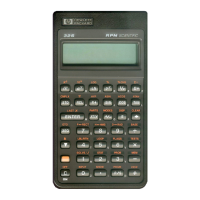Conditional
Instructions
Another way to alterthe sequenceof
program
execution is by a
condi
tional
test,
a true/false test that
compares
two
numbers
and skips the
next program instruction if the proposition is
false.
For
instance, if a conditional instructionon line A05 is x=0? (that is,
is x
equal
to
zero?),
then the
program
compares the contents of the X-
register with zero. If the X-register
does
contain zero, then the
program goes on to the next line. If the
X-register
does not contain
zero,
then the
program
skips
the next line, thereby
branching
to line
A07. This rule is commonly known as "Do if true."
Do if true R01 LBL R Skip if false
R05
x=G?
,_^
R96
GTO
B j
R07
LN
,-J
|
R08
STO
R
* i |
to
LBL
B
The
example
above
points
out a
common
technique
usedwith
condi
tional
tests:
the
line
immediately
after
the
test
(which
is
only
executed
in
the
'true* case) is a
branch
to another label. So the
net
effect
of
the
test is to branch to a different routine
under
certain circumstances.
There are three
categories
of conditional instructions:
•
Comparison
tests.
These
compare
the
X-
and
Y-registers,
or the
X-
regjster
and
zero.
•
Flag
tests.
These check the
status
of
flags,
which can be
either
set
or
clear.
•
Loop
counters.
These
are
usually
used to
loop
a
specified
number
of
times.
6:
Programming
Techniques
95

